Nuclear Power Laboratory
These panorama photographs show Nuclear Power Laboratory in Nuclear Thermal Engineering Division (former division name). The laboratory was constructed two years after the establishment of Laboratory for Nuclear Reactors in 1964. Nuclear Power Experimental Apparatus set up in the stairwell of the laboratory was used for academic research studies by graduate students in Master’s course and doctoral course of Department of Nuclear Engineering, Graduate Course of Science and Engineering. They have grown up to be excellent researchers or engineers through the academic research studies, and have contributed to Nuclear Society since their graduation. Major research topics are boiling two-phase flow in the core of light water reactors, thermal-hydraulics of nuclear fusion blanket, thermal-hydraulics of lead-bismuth-cooled fast reactors, and fluid-dynamics measurement.
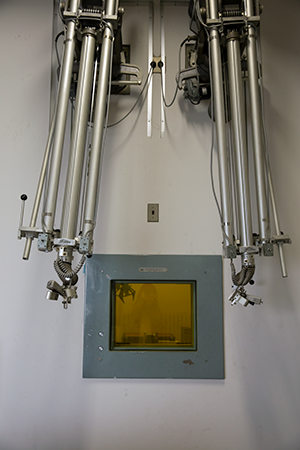
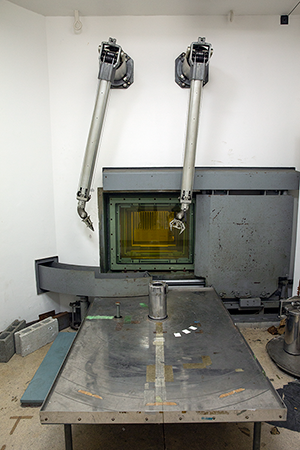
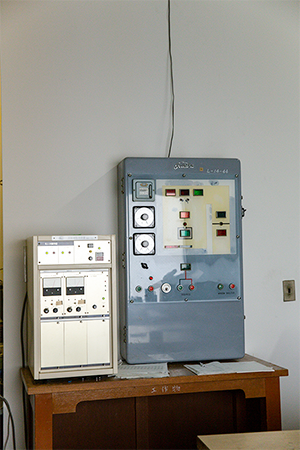
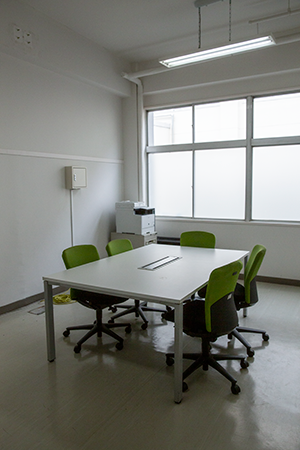
Rarefied gas wind tunnel
This Facility has been utilized for studies on transport phenomena of non-steady state in fueling and exhausting systems of a nuclear fusion reactor. Recently, it has been applied for wide ranges of fundamental plasma technologies as a wind tunnel of plasmas, such as plasma thruster, atomic and molecular processes in a boundary area of magnetic confinement thermonuclear fusion reactor, recombination pumping laser, innovative material processing and surface modification, or experimental simulation of molecular phenomena in ionosphere. This experimental facility is not for high vacuum experiment. Its important feature is in the respect that experiments can be carried put with a certain vacuum level even when a large amount of gas is introduced into the wind tunnel.
主な仕様
| 風洞内径 | 1mφ |
| 風洞長さ | 2.2m |
| 付属設備 | 20″油拡散エゼクターポンプ2台 12″メカニカルブースター1台 4″油回転ポンプ1台 三次元トラバース機構(常設) |
| 排気特性 | 排気速度10000r/sec(10-2Torr) 到達圧力2×10-4Torr |
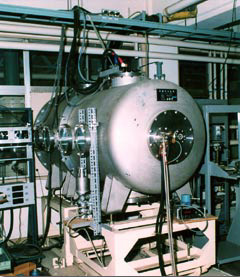
過去の主要な研究課題
- 核融合炉の周辺プラズマに関する研究
- 低温プラズマの分光研究
- プラズマジェットレーザーに関する研究
- アークジェットスラスタに関する研究
High resolution electron microscope for radiation damage
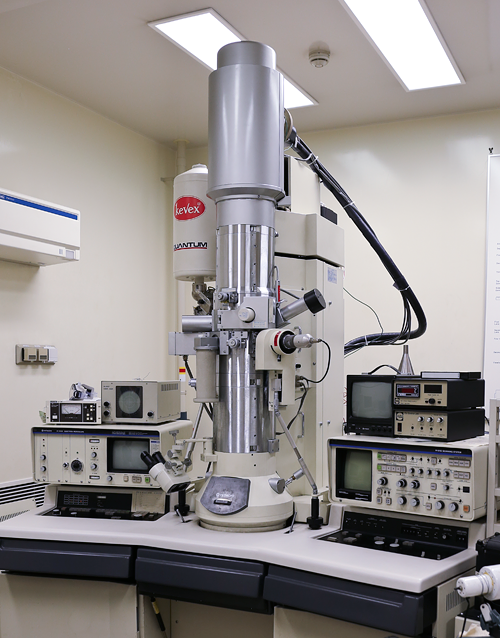 This facilities was established for basic researches of nuclear ceramics applied for fission and fusion nuclear reactors. A series of high performance experimental equipments are installed into the radiation control area. Main equipments include high-resolution electron microscopy (photograph) for observation of crystalline defects induced into materials, X-ray diffractometer, Laser-flash type thermal conductivity measurement unit, mechanical testing machine, scanning electron microscopy, Oxygen-Nitrogen analyzer, etc.. The researches on radiation damage of ceramics for low activation application, development of materials for severe environments, development of new materials are now going on.
This facilities was established for basic researches of nuclear ceramics applied for fission and fusion nuclear reactors. A series of high performance experimental equipments are installed into the radiation control area. Main equipments include high-resolution electron microscopy (photograph) for observation of crystalline defects induced into materials, X-ray diffractometer, Laser-flash type thermal conductivity measurement unit, mechanical testing machine, scanning electron microscopy, Oxygen-Nitrogen analyzer, etc.. The researches on radiation damage of ceramics for low activation application, development of materials for severe environments, development of new materials are now going on.
Photo-excited scanning probe microscope apparatus used in ultrahigh vacuum
We have developed the apparatus for measuring not only electronic states but also optical properties of materials at nano-scale meter, by combining scanning probe microscope with a line-tunable laser.
Pb-Bi corrosion test loop
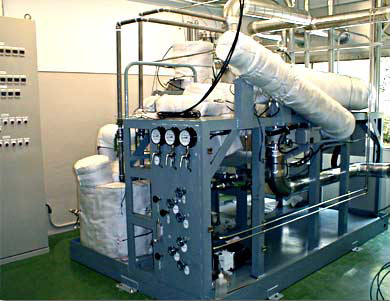 Lead alloy-cooled fast reactors (LFR) are the inherently safe reactors which are suitable for future utilization in the world for sustainability of energy resources and global environment. One of the critical issues for the development of LFRs is the compatibility of structural and core materials with the lead alloy. Thus, for the development of corrosion-resistant materials, high chromium steels with contents of aluminum and silicon and SiC are immersed in a flowing lead-bismuth eutectic at the velocity of 2 m/s and temperature of 550ºC under oxygen potential control condition for more than 1,000 hrs. The maximum flow rate is 6 L/min, and the total amount of lead-bismuth is 400 kg.
Lead alloy-cooled fast reactors (LFR) are the inherently safe reactors which are suitable for future utilization in the world for sustainability of energy resources and global environment. One of the critical issues for the development of LFRs is the compatibility of structural and core materials with the lead alloy. Thus, for the development of corrosion-resistant materials, high chromium steels with contents of aluminum and silicon and SiC are immersed in a flowing lead-bismuth eutectic at the velocity of 2 m/s and temperature of 550ºC under oxygen potential control condition for more than 1,000 hrs. The maximum flow rate is 6 L/min, and the total amount of lead-bismuth is 400 kg.
鉛ビスマス循環実験装置の主な仕様
| システム圧力 | 0.1~0.4 MPa |
| 鉛ビスマス保有量 | 450 kg |
| 試験部最高温度 | 550 ℃ |
| 最高流量 | 1x10-4 m3/s |
| 試験部最高流速 | 2m/s |
| 加熱器・冷却器容量 | 22 kW |
| 高温部構造材料 | 9Cr-1Mo鋼 |
| 低温部構造材料 | SUS316 |
| 試験部試験片ホルダー材質 | モリブデン |
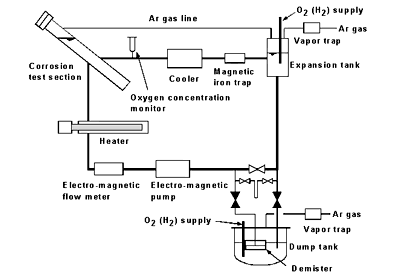
Thermo balance system for development of thermochemical energy storage materials
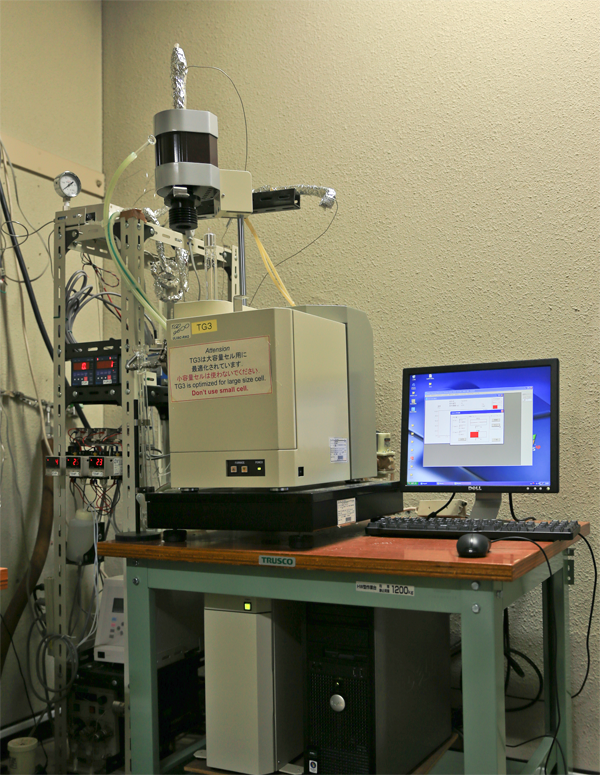 Energy storage technology is a key issue for efficient energy system. Thermochemical energy storage (TCES) has big potential for the technology.
Energy storage technology is a key issue for efficient energy system. Thermochemical energy storage (TCES) has big potential for the technology.
Kato laboratory is developing original TCES materials for energy efficient use and load-leveling of nuclear energy, industrial process and renewable energy systems. Kinetic performance of the developed TCES materials are evaluated in the thermo balance system.

